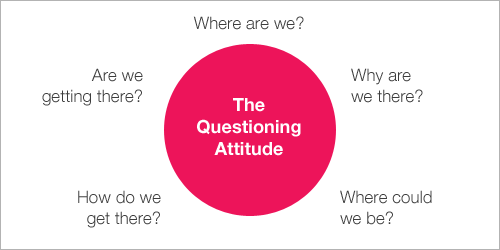2011-05-19
Establishing a Brand Identity

Zac Kenni
2011-05-19
Establishing a Brand Identity
Source: justcreative





Once the domain of multi-million dollar corporations, the concept of branding is being embraced by individuals and small businesses as a means to distinguish themselves from the competition. It takes time and patience to develop an effective brand, both in the creation and the implementation phase. A brand cannot be created overnight; it is planned, maintained, groomed. But, if done effectively, the process is well worth the energy.
Simply put, a brand is the public image of a business, product or individual. It is reputation. It is a promise. When delivered consistently, a brand shapes consumers’ perceptions and expectations. A successful brand celebrates personality, honors values and embodies the spirit of the subject that it represents.
The objective of a branding strategy is to develop clear, compelling, consistent messages that are easily conveyed. A good brand contains messages that can speak to multiple audiences, including current customers, potential patrons and people who hold misconceptions. Yet, this needs to be delivered in a short, simple way.
SPONSORED MESSAGE
UNLIMITED DOWNLOADS : Download Over 1.5 Million Fonts, Freebies & Design Assets
PHOTOSHOP
1,419 Photoshop AddonsMOCKUPS
5,696 Product MockupsFONTS
5,805 FontsCreating a Logo

A crucial part of developing a branding strategy is the creation of a strong logo, but it’s important to remember your logo is not your brand. This visual element symbolizes the brand and can play a large role in establishing an emotional connection with the product. Integrating the logo into all corporate communication elements, including media relations, information packets, brochures, advertising, videos, fact sheets, newsletters, the website and social media, is an important part of building brand identity. Consistency in design, look and tone is vital in building credibility.
The number one rule for logo design is that it must be able to speak for itself. Effective logos do not have to be explained. Take a look at some of the world’s most successful brands: the Nike swoosh and the Air Jordan jump man logo, the golden arches of McDonalds, the interlocking rings of the Olympics, the colorful peacock of NBC. It’s almost impossible to think of Yahoo! and not hear the country twang. Both Google, with its ever-evolving doodles to celebrate special days, and Twitter, with its simple blue bird, have become so successful that the American lexicon now includes “googling” and “tweeting” as verbs. Brands & strong visual identities help this happen.
Investigating a Brand Identity

It is easy to hire a graphic designer and writer to assist in the creation of the branding elements. But, significant time, money and energy will be lost if a well thought out plan isn’t created first. The first place to start is with a SWOT analysis (detailed SWOT Guide here). When evaluating the Strengths, Weaknesses, Opportunities and Threats to a company, it is crucial to be brutally honest. Inflation of successes and marginalization of limitations will set this project up for failure.
A thorough review of the business should include what it accomplishes, how products and services are delivered, why it exists and what it makes it different from competitors. Also consider the target audience, what their top concerns are and how the business can help. Be careful not to quickly reject an idea as ridiculous during this brainstorming phase. An off-the-wall suggestion, once examined, often has practical applications.
When the list is able to be narrowed down to the three best ideas, a focus group of five to ten people should be assembled to gauge their reactions, perceptions, misconceptions, connotations, feelings and general opinions. A separate focus group of staff and board members, as well as current customers, should also be gathered.
Building a Branding Strategy

Negative feedback about products and services should be considered when developing the branding strategy. Make a list of the current public perceptions, then take a critical look at how those beliefs can be repositioned. For example, a product that is perceived as being outdated can be repackaged as something that is traditional and timeless.
At a minimum, the focus groups’ opinions should steer the final branding position statement. Typically one to two paragraphs, this descriptive statement must embody who the company is and what it uniquely delivers. From these sentences, cull sound bites (short phrases) that can be incorporated any time someone speaks or writes about the business.
Once this is accomplished, visual and textual elements can begin development. These should reflect the personality and values of the brand, but also match the interest and lifestyles of the target audience. For example, if a surfboard company wants to attract a young, athletic audience, the messages, fonts and artwork should be playful and outdoorsy. In contrast, a retirement savings company needs to build a more subdued brand in order to portray an image of trust.
Utilising a Tagline

A tagline should also be developed to define the business to its audience. When customers hear a tagline, they should immediately think of its associated company. For example, when someone says, “The happiest place on earth,” the first thought is Disneyland. Other large corporations have been extremely successful with this tactic, including M&M’s “It melts in your mouth, not in your hands” and Campbell Soup’s “Mmm, mmm…good!”
The point is to keep the tagline simple and easy to remember. Being clever or witty is only advised if it doesn’t complicate the message. It also needs to remain short since the tagline is typically incorporated into the logo design, as well as all collateral marketing pieces.
As the brand is implemented, it is imperative that everyone affiliated with the business is able to articulate the messages. Each person who represents the company is a brand ambassador, from the CEO, to the sales manager, to the receptionist. Embrace it.


Qatar

Commercial bank tower, West Bay,
15th floor, Doha, Qatar
PO Box 27111
+ 974 50 239 329
QATAR@CREAPIX.NET











